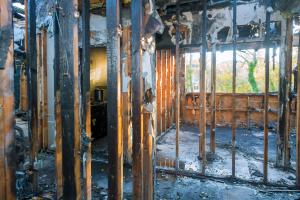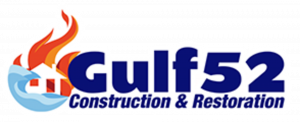Heat, smoke, and water from firefighting efforts all contribute to structural and material degradation.”
HAMMOND, LA, UNITED STATES, January 15, 2025 /EINPresswire.com/ -- Fire can cause extensive damage to residential, commercial, and industrial properties, compromising their structural integrity and posing long-term risks if not addressed properly. The restoration process involves assessing the extent of the damage, repairing or replacing affected components, and ensuring the building meets safety standards. — Earl Carr, Jr.
Earl Carr, Jr., president of Gulf 52 in Hammond, Louisiana, highlights the importance of comprehensive evaluations and targeted repairs in restoring fire-damaged structures.
Carr, Jr. explains, "Fires affect properties in multiple ways. Heat, smoke, and water from firefighting efforts all contribute to structural and material degradation. Addressing these issues promptly and thoroughly is essential to prevent further damage and ensure the property’s safety and usability."
Assessing Fire Damage
The first step in restoring structural integrity is conducting a detailed assessment of the property. This evaluation identifies the extent of the damage and determines which areas require immediate attention. Key factors considered during the assessment include:
Foundation and Framing: Intense heat can weaken concrete, steel, and wood framing, leading to potential instability. Inspecting these elements is critical to ensure the building’s core structure remains sound.
Roof and Walls: Fire can compromise the load-bearing capacity of roofs and walls, particularly in areas directly exposed to flames.
Smoke and Soot Residue: Smoke and soot penetrate porous materials, causing discoloration, odors, and potential health risks. These contaminants must be addressed to restore indoor air quality and structural surfaces.
Water Damage: Water used to extinguish the fire often exacerbates damage by saturating materials, promoting mold growth, and weakening structural components.
Professionals use tools such as moisture meters, thermal imaging cameras, and structural integrity tests to evaluate the damage and develop a plan for restoration.
Steps to Restore Structural Integrity
Restoring a fire-damaged property requires a systematic approach to ensure safety and durability.
1. Stabilizing the Structure
Before repairs begin, stabilizing the structure is critical to prevent further collapse or damage. Temporary measures, such as shoring up weakened walls and reinforcing load-bearing beams, ensure the site is safe for workers and occupants.
2. Removing Damaged Materials
All materials compromised by fire, smoke, or water must be removed. This includes charred wood, damaged drywall, and insulation. Removing these materials allows for a clearer evaluation of underlying issues and provides a clean slate for repairs.
3. Addressing Water and Mold Issues
Water damage from firefighting efforts often leaves behind moisture, which can lead to mold growth. Dehumidifiers, air movers, and antimicrobial treatments are used to dry and sanitize affected areas.
4. Repairing and Replacing Structural Components
Structural repairs focus on restoring the building’s load-bearing capacity. This may involve:
Replacing damaged beams, trusses, or joists.
Repairing or reinforcing concrete and masonry elements.
Installing new drywall, insulation, and other interior materials.
In some cases, modern materials and techniques can improve the building’s resilience against future fires.
5. Cleaning and Deodorizing
Smoke and soot residue must be thoroughly removed from all surfaces, including walls, ceilings, and HVAC systems. Specialized equipment, such as air scrubbers and ozone generators, helps eliminate odors and improve indoor air quality.
6. Rebuilding and Finishing
Once the structural repairs are complete, attention shifts to restoring the property’s aesthetics and functionality. This includes painting, flooring installation, and restoring fixtures.
Ensuring Compliance with Building Codes
Rebuilding after a fire often involves adhering to updated building codes and safety standards. These regulations are designed to enhance fire resistance, improve occupant safety, and ensure structural durability. Compliance may involve:
Installing fire-rated materials.
Upgrading electrical and HVAC systems to meet modern standards.
Adding fire suppression systems or smoke alarms.
Working with licensed contractors familiar with local codes ensures the restored property meets all regulatory requirements.
The Importance of Professional Restoration Services
Restoring a fire-damaged property is a complex process that requires expertise, specialized equipment, and adherence to safety protocols. Professional restoration teams provide:
Comprehensive Damage Assessment: Identifying hidden damage that may not be immediately visible.
Efficient Restoration Processes: Coordinating multiple aspects of repair and rebuilding to minimize disruption.
Expertise in Materials and Techniques: Using appropriate methods to restore or replace damaged components.
Collaboration with Insurance Providers: Assisting property owners with documentation and claims processing.
The Risks of Delayed Action
Delaying the restoration process can lead to additional complications, including:
Structural Weakness: Unaddressed damage can worsen over time, increasing the risk of collapse.
Mold Growth: Moisture from water damage creates a favorable environment for mold, leading to health concerns and additional remediation costs.
Higher Repair Costs: The longer damage goes untreated, the more extensive and expensive repairs become.
Taking immediate action after a fire ensures the property is stabilized, damage is contained, and the restoration process can proceed efficiently.
Restoring Confidence in Fire-Damaged Properties
The goal of fire damage restoration is not just to repair what has been lost but to create a space that is safe, functional, and built to last. By addressing structural issues, mitigating damage, and adhering to modern safety standards, property owners can regain confidence in their restored spaces.
For properties affected by fire, a thorough and professional approach to restoration is the key to moving forward. With the right expertise and resources, even the most challenging situations can be resolved, ensuring the property’s long-term value and safety.
About Gulf 52
Gulf 52, located in Hammond, Louisiana, specializes in disaster mitigation, restoration, and construction services. With extensive experience in fire damage restoration, the company provides tailored solutions to address structural damage, smoke and soot contamination, and water-related issues.
Morgan Thomas
Rhino Digital, LLC
+1 504-875-5036
email us here
Visit us on social media:
Facebook
Legal Disclaimer:
EIN Presswire provides this news content "as is" without warranty of any kind. We do not accept any responsibility or liability for the accuracy, content, images, videos, licenses, completeness, legality, or reliability of the information contained in this article. If you have any complaints or copyright issues related to this article, kindly contact the author above.



